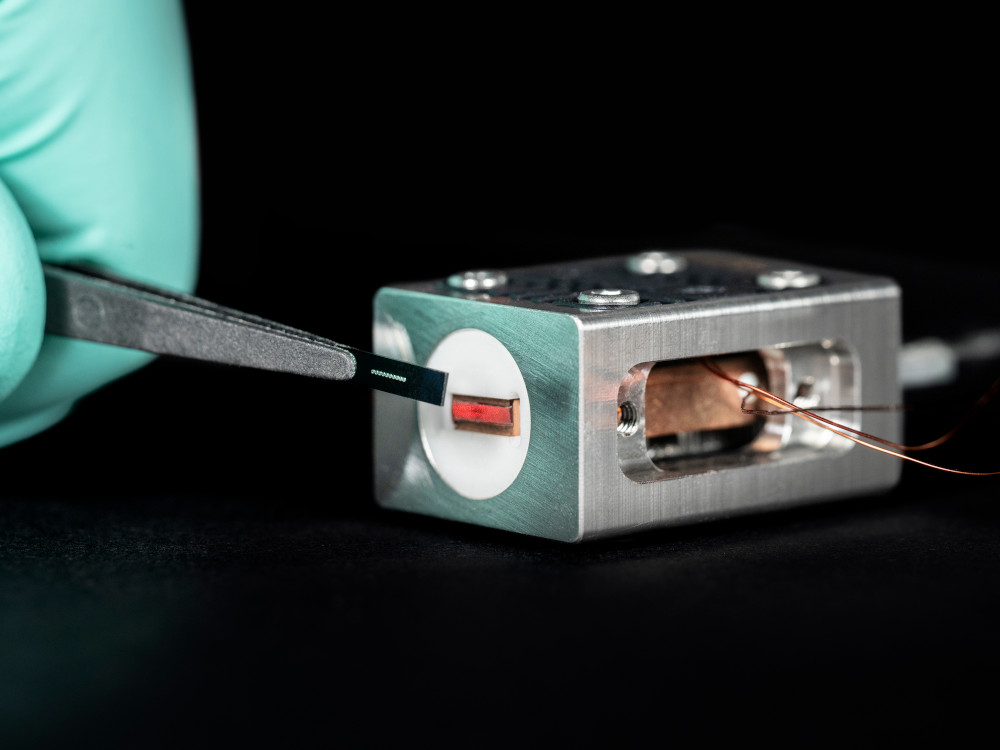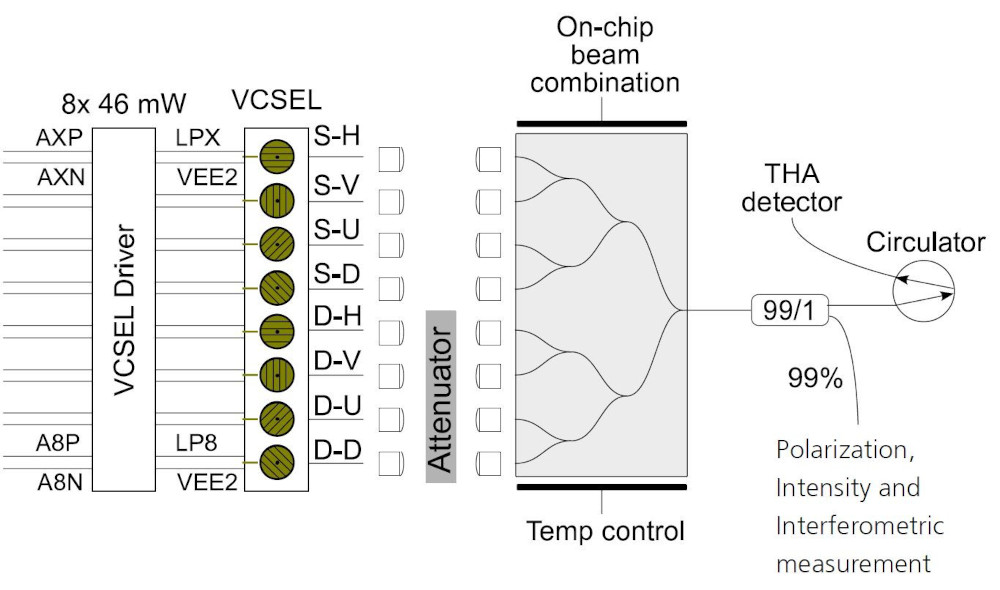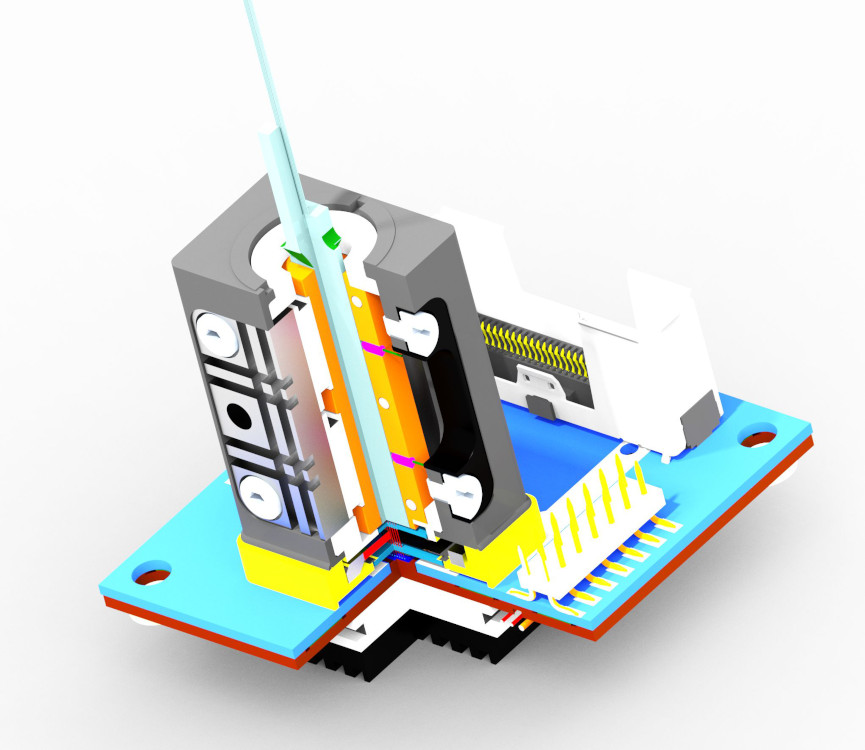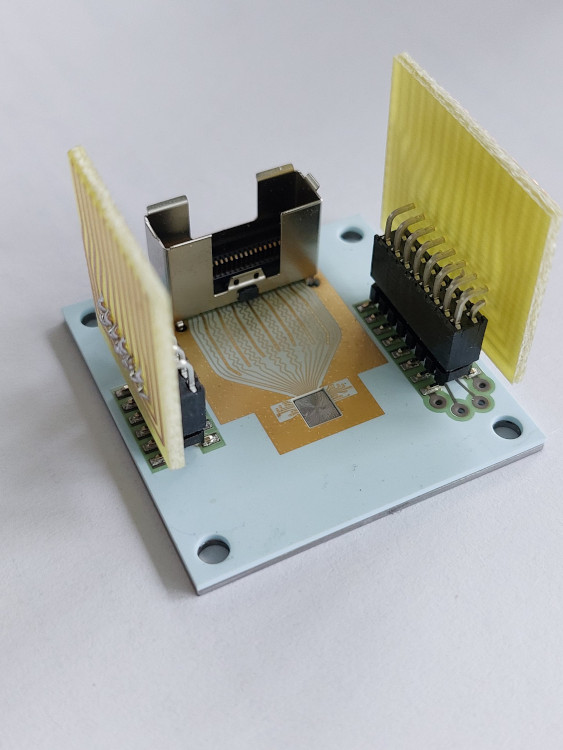
20 Jan Ultra-compact light source for quantum encryption
The greatest challenge in optical quantum communication is to generate indistinguishable and randomly polarized photons at a high rate in a source that is as compact and energy-efficient as possible. The concept of using strongly attenuated, randomly polarized light pulses for secure quantum communication has been around since the mid-1980s. Most commercial light sources for quantum communication are still based on this idea today.
The Fraunhofer Institute for Applied Optics and Precision Engineering IOF in Jena has now developed a photon source based on a linear array of eight surface-emitting semiconductor lasers (vertical cavity surface emitting laser, VCSEL). The institute is presenting a prototype of the photon source at this year’s SPIE Photonics West in San Francisco. According to the researchers, it has a particularly compact design, high spectral and temporal precision and good polarization quality. The system has been specially developed for secure connections from satellites to a ground station.

Schematic representation of the eight-channel VCSEL source for polarization-encrypted photons. Image: Fraunhofer IOF
High level of security: four signal and four decoy states
The new photon source uses a gallium arsenide (GaAs) substrate for eight VCSELs with a wavelength of 850 nm and lithographically structured polarizers developed at the University of Stuttgart. With these integrated components, the source can deliver four polarization states (horizontal →/vertical ↑ /diagonal ↗/antidiagonal ↖) for signals according to the BB84 protocol (encoding via four polarization directions) from an ultra-compact box.
According to the researchers, the temperature deviations of the individual VCSELs are significantly smaller than 0.5 K. As a result, the wavelength differences of the polarized photon packets can be kept below 40 pm. Preliminary data show that the on-chip polarizers achieve an extinction ratio of at least 12 dB in the diagonal direction and at least 20 dB in the horizontal or vertical direction.
Four of the eight VCSEL channels provide decoy states by using an attenuator of about 4 dB. Decoy states differ from the regular pulses only in their intensity, i.e. in how many photons they contain on average. The transmitter knows which pulses are regular states and which are decoy states, but a potential eavesdropper does not. This increases the overall security of the quantum communication link, as both signal and decoy pulses are generated in the system in a spectrally and temporally indistinguishable manner.

Illustration of the VCSEL source on the circuit board. The frame houses the optics, which are attached to the top of the VCSEL chip. The glass tip on the housing is the waveguide combiner from which the polarization signal is emitted. Image: Fraunhofer IOF
Compact and satellite-qualified
The integrated digital-to-analog conversion, developed in cooperation with the Ilmenau University of Technology, allows a pulse repetition frequency of up to 5 GHz. This signal is to come from an additional quantum random number generator. The optical system of the source is housed in a Kovar box with a low expansion coefficient.

A ceramic printed circuit board (PCB) is bonded to a molybdenum heatsink. The PCB carries the VCSEL and driver chip (center). The wings are plugs for thermal management components. Image: TU Ilmenau
According to the developers, the VCSEL source for the BB84-based quantum key distribution with decoy states fits into a volume of just 40 × 40 × 43 mm³ thanks to the integrated components. The signals of the eight separate channels differ spectrally by less than 50 pm and have differences in the time delay of less than 1 ps. According to the researchers, this makes the source a promising candidate for a space mission on a microsatellite (Cubesat). All technologies were selected to be ready for future qualification in space.
SPIE Photonics West 2025
Fraunhofer Institute for Applied Optics and Precision Engineering IOF
Booth: 0205
Source and image: www.iof.fraunhofer.de






